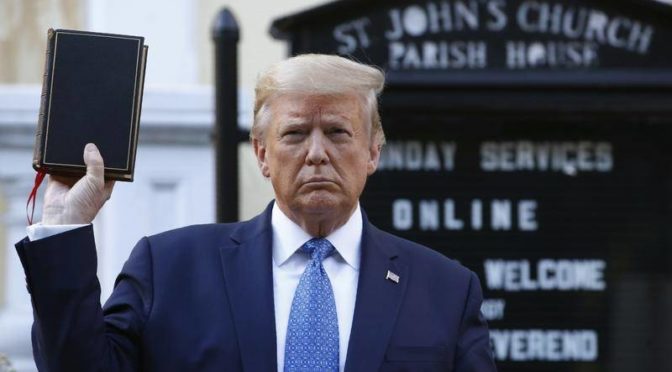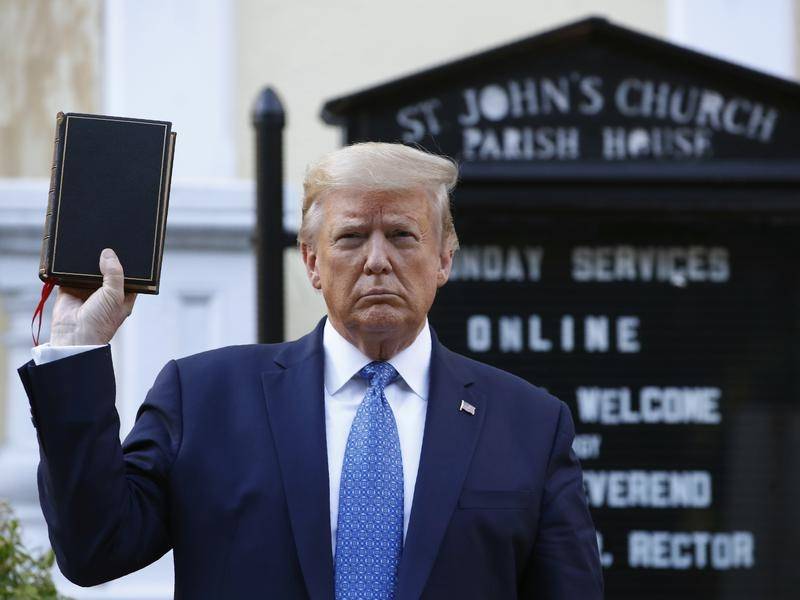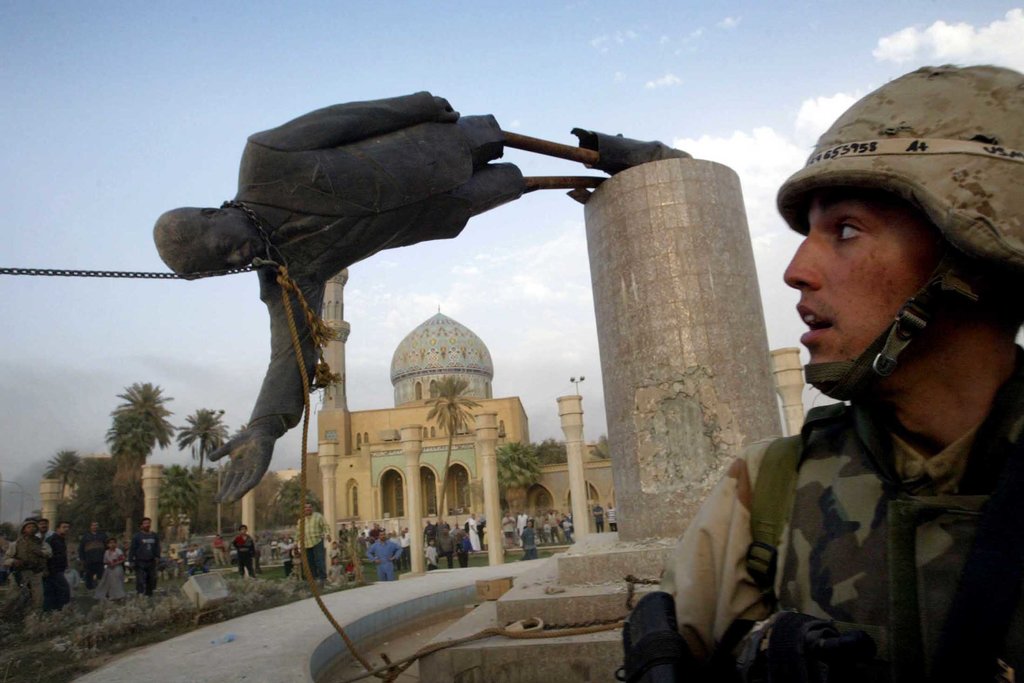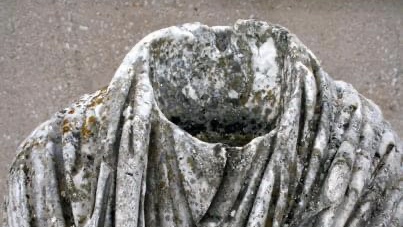I believe the “Image of God” is a vocation not purely an ontological reality that gives an inherent dignity to human beings by virtue of their being human.
Humans have dignity because we have the created capacity and purpose of reflecting the divine nature and character of God as his representatives in the world; our task is to be for the God of the universe what the idol statues in other theocracies did for their gods.
But the imago dei as it has been understood and developed in church tradition (particularly via ‘systematic theology’) is built on a bunch of assumptions about the nature of human being that I think are problematic; partly in that they emphasise “being” over “doing.” I’ve written about why we’re better off speaking about the “tselem elohim” than the imago dei, and grounding our Genesis 1 informed ‘theological anthropology’ in the Hebrew/Ancient Near Eastern thought world rather than the thought world of the early church in the Latin East with its graeco-roman influence (which isn’t to say the historical church has nothing to say about Anthropology, where I’m going here resonates with, for example, Augustine and Irenaeus), it’s just to say ‘systematic theology’ can often be built on some pretty shaky systematising, especially if it’s built on exegesis that reflects a particular age, and its obsessions and suppositions, rather than (inasmuch as we can access it) the world of the text and both its first audience (Old Testament Israel, whether pre-, mid-, or post- exile — or all three), and its (to borrow a phrase from Old Testament scholar Doug Green) ‘Christotelic’ fulfilment.
For more on how Biblical studies, rather than just church tradition, should inform how we understand the Image of God I’d recommend John Walton’s work on what the nature of ‘being’ is in Hebrew thought, where he suggests ‘function in a system’ not ‘material essence’ is how we should view the ‘making of things,’ J. Richard Middleton’s The Liberating Image, a book exploring the relationship between images and idols in Hebrew and Ancient Near Eastern belief and practice, and Alistair McFadyen, who in a paper titled “Imaging God” identified this same “tendency within theological tradition” for the “image” to function as a noun, rather than as a verb. It’s a good article that draws on Psalm 8 to make the case that this ‘verb’ — this ‘imaging God’ — requires us to be relationally connected to God for our calling to reflect him to be possible; he says Psalm 8 provides a reflection on how to ask what it means to be human, but one that as we enter the reflection we start reflecting God…
“What we have, rather, is liturgical performance. And if there is a sense in which we might say the anthropological question is not only asked but answered in the psalm it is not by the communication of facts about essential human nature. Rather, the psalm IS its own
answer to the question. That is to say, in singing the psalm and praising God, in asking the anthropological question, we are performing an answer to it: actively imaging God by seeking our humanity as sought and called by God. The psalm becomes a kind of performative utterance, drawing the singer into the dynamics of imaging relationality of which it speaks through direct invocation of the power of the divine Name through direct address.”
I’ve written before about how the Bible, in its form as a narrative centred on, and fulfilled in Jesus, contains the story of humanity’s glorious creation, our fall, our struggle to be who or what we were created to be, and God’s redemption, restoration, and transformation of our function through Jesus. I drew on Mesopotamian and Babylonian sources to show how this story happens against a particular backdrop with very different stories, and a very different concept of who and what the ‘tselem elohim’ (or “image of God” is) and what it looks like to carry out that vocation in the world, and then looked at how the work of Jesus in the New Testament is a work of re-creation and revivification of us as living, breathing, images of God. That the image of God in us needs restoration, and that we need to be resurrected and recreated, suggests that we can (and do) in our failure to be who we were made to be, start a lifelong process of attempting to eradicate the image of God imprinted on us, so that we can, instead, function as the images of our gods. There’s an increasingly popular phrase articulating this idea — drawing on Augustine, but also on Paul, on Psalms, on Isaiah (and pretty much the entire Old Testament); this is the idea that “we become what we worship” — our decision to worship created things, in the place of our creator, distorts our bodies and hearts and minds so that we represent something other than God, while as “created things” ourselves we are meant to reveal the divine nature and character of God. There are aspects of God’s image that we don’t eradicate before we die — that we live, and breathe, speak, create, and love — but as we worship other things in God’s place, our lives, breath, speech, creativity, and love are given to things other than God and so ‘image’ or reflect the things we worship.
When we engage in false worship we participate in a process that leads to death, and thus, to the eradication of the image of God in our bodies; we return to the dust from whence we came, as we die — as we expire rather than being inspired (receiving God’s Spirit to re-create us so that we do not bear the image of Adam, but the image of Jesus (1 Cor 15), we die in “lives” that aren’t participating in our created vocation as God’s image bearers, but rather lives in rebellion against him, expressed as we reflect the gods of our choice. If we choose to worship things other than God we were “made in God’s image” — created with a purpose — but we are explicitly and wilfully rejecting that purpose. Eradicating the image.
Jesus the image of God (Colossians 1) then comes to transform us into his image (Romans 8, 1 Corinthians 15), by the Spirit, which enables us to turn from false worship (Romans 1) to true worship (Romans 12), participating in a new script for our lives that shapes us, again, to be living, breathing, images who live and love like God.
There are, of course, ethical implications for this.
I should love my neighbour, as Jesus commanded, because my neighbour (as C.S Lewis might put it in the Weight of Glory) has the capacity not just to function as God intended us to in this creation, but the potential to be a glorious new creation, heavenly even, not just indwelt by the breath of life (psyche in the Greek), but by God’s Spirit (pneuma in the Greek) — Paul, in 1 Corinthians 15, has those glorified in Christ shifting from being psyche-icons to pneuma-icons (icon is the Greek word for ‘image’).
I should view people according to the capacity for a person to participate in their created vocation (and that I too, was once dead), but I should also recognise that so long as a person has life, and breath, and speaks and loves and is capable of creativity and still the tension between knowing what we should do, and fighting the temptation to do something else (Romans 7 — which I take, because it’s pre-Spirit, to be Paul describing life in Adam). There is an inherent dignity to that; and yet, that same dignity, which is given as a reason to not murder to Noah, is eradicated enough by idolatry that the same texts (the Torah) can command the destruction of idolatrous nations around Israel, while the prophets warn that Israel will share the same fate should it worship the breathless and dead idols of the nations. This command, for example, in Numbers: “drive out all the inhabitants of the land before you. Destroy all their carved images and their cast idols, and demolish all their high places” (Numbers 33:52) is actually a command to destroy ‘cast tselems’. If a “tselem elohim” is an ‘idol statue’ then to ‘become like them’ is to become an image of something else.
The image of God as a sort of ‘inherent dignity’ is a place people go to both to ethically justify any ‘natural’ human behaviours; the enacting of our basest internal desires, and it’s also a place people go to affirm the dignity of those who fall outside other norms and constructs (often set up from frameworks and anthropologies that look more Babylonian than Christian); that is, the image of God is cited as the reason to love and value those on the margins. It is appealed to in debates about race. But, I suspect, if you’d asked why an Israelite felt justified in going to war with Canaan, on the basis that the Canaanites were made in God’s image, they’d have said it was precisely because Canaan was failing in this calling that war was justified; and yet, Israel’s counter-narrative in Babylonian exile is not just that all Israelites are made in God’s image (where, in Babylon, it’s just the king), but that even the Babylonians have that capacity, lost in their own exile from God. This different view of the image of God in those we might treat as lacking dignity (if we see godlike as the ability to, say, use power or perform as a contributor in an economy) still focuses on something internal (a person’s capacity to reflect the divine nature and character of God, to participate in being fruitful and mulitplying by reflecting the life and ‘doing’ of God), but emphasises that this happens in relationship with God. The ‘image’ isn’t a thing we reflect through performance, but through relationship with God. Classic, Biblical, Christianity (whether Catholic, Protestant, Reformed, or Arminian) doesn’t ever see this as exclusively a human action, but as an enaction enabled by God’s self-revelation through the world, his word, and Jesus and the Spirit; we can’t exclude any human with life and breath from participating in the ‘breath of life,’ given by God, or from God loving and relating to that person as they are. Yet, we can say that idolatry and a person’s breaking of relationship with God does affect a person’s image bearing function. There are also lots of other reasons to see those at the margins of a society that devalues people who can’t perform certain functions as our neighbours, made and loved by God, and as precisely the people Jesus came to liberate through the restoration of the image of God in humanity, the liberation of the world from bondage to curse, sin, and death, and in the renewal and restoration of all things.
“Those who make them will be like them, and so will all who trust in them.” (Psalm 115:8)
We can also, when it comes to ethics and politics say ‘that person is not reflecting the image of God’ in how they live; we can say that certain behaviours push us away from the image of God and into the image of other gods (so Paul in Colossians 3, for example, and all the warnings about idolatry in both Testaments). We can say that these behaviours are sometimes systematised in laws, in political systems, and in cultures (practices, art, rituals, norms, etc); and react accordingly — both seeking to set our hearts and minds on heavenly things, not earthly things (the liturgy of Psalm 8) through true worship — including how we use our bodies and interact with the world (Romans 12), and speaking to condemn idolatry and warn about its affects; and I think even to talk about how idolaters are not ‘imaging God’; not being who they were created to be. This doesn’t mean following Israel’s example in the Old Testament (which was tied to an explicit command of God connected to his actions in the world to restore an image bearing people, and thus creation itself, that anticipated and were fulfilled in the coming of Jesus to pour out the Spirit into the lives of a people). This doesn’t mean operating as judge, condemning to dust, or executioner (though I do think “the state” can do that) — but it does mean recognising that idolatry systematically (both at an individual and cultural level) eradicates the ‘doing’ part of the function of humanity, and that restoration is found in union with Christ, and the Spirit’s act of renewing and re-creating as we are “raised with Christ” and transformed into his image; that is “the image.” It does mean not simply appealing to the ‘image of God’ in a person to say their natural desires should be affirmed and celebrated, or that they must be treated with a particular dignity (there are commands from Jesus that should shape the way we act towards others). This allows us to recognise the distorting impact of sin on our ‘nature’ — we all ‘know what we ought to do,’ but ‘because of sin at work in our flesh,’ naturally choose to do non-image-of-God things with our lives; and when we choose to worship created things in the place of the creator this drastically amplifies this distortion.
In the past few weeks we’ve seen the eradication of a variety of tselems; of statues, but also the cancellation, by different groups, of a variety of human images. Someone asked a question in a discussion about Aimee Byrd’s cancellation at the hands of the Alliance of Confessing Evangelicals (and the similar abhorrent treatment she’s receiving at the hands of a cabal of so-called Reformed Christians in a closed group on Facebook) and statue toppling. I think both are acts of desecration; deliberate expressions of judgment about a person’s function as a representative; an image bearer of God.
The question is whether a person who is either erecting a ‘sacred’ digital icon of themselves, desecrating a statue, or desecrating a person’s reputation by ‘cancelling them’ is operating with a true or false picture of God, and thus seeking to reflect, or promote a true image of God while destroying or ‘desacredising’ (trying to capture what ‘desecrate’ means in a not-word word) false images. To ‘cancel’ someone is to ‘demolish their image’ — to damn their memory — to pass judgment on that image as not worthy. I think, in some ways, to cancel someone is to take the sword (in Romans 13) into one’s own hands; to position oneself as God, not a person — and to take up the role of Israel entering the land. Because there is no secular/sacred divide; and because every person operates as ‘the image of their god’ (we become what we worship), both every human ‘image’ affirmed or cancelled, and every toppled or erected statue is either a ‘desecration’ — a claim that this image is not of God, or a ‘consecration’ — an attempt to secure or reflect the image of a particular god. Some acts are both at the same time; to put an image on the outer is an act of defining who is on the ‘inner’ — but also, often images are replaced, not simply eradicated. So, for example, a mining company blowing up a sacred indigenous site simultaneously declares that site ‘de-sacred’ (delegitimising an alternative view) while ‘consecrating’ mining as a holy act in service of a view of humanity and who we should be that is ultimately also religious.
Those cancelling Aimee Byrd should just honestly say they don’t see Aimee Byrd representing truths about God; they might say at that point she is representing an image of an idol, and that, like idol statues in Israel, she should be destroyed… Just as Trump, when he positions himself as a monumental figure of faithfulness (even in a photo opp) should admit that he is presenting himself as an image of the god he worships, and those holding Trump up as a leader (or even just a ‘good Christian’) who ‘bears the image of God’ should acknowledge that the god Trump then represents is the god they are worshipping and reflecting; a God who, incidentally, looks nothing like Jesus, and a whole lot like the false images Paul tells us to get rid of in Colossians 3. The trick is, often in desecrating others who are bearing the image of God we actually eradicate something of our own humanity by propping up and worshipping a false god, or we reveal the gods we’re really worshipping; and the screenshots circulating of the kinds of criticism levelled at Aimee Byrd are revealing.
The ‘image of God’ is a more flexible, dynamic, vocational thing than simply an ontological reality underpinning the common humanity of Trump, Byrd, and those being deformed by the cesspool of the “Genevan Commons” Facebook group. For what it’s worth, I think Aimee Byrd is seeking to reflect the image of God, in relationship with God as we see God revealed in Jesus; and this may also be true of those raising questions about her ideas from good faith positions…
But I think those who take the bold step of appointing themselves as gods, whether in her ‘cancellation’ or in the support of alternative images (idols) like, for example, Trump and his image, are on pretty dangerous ground. Ultimately it’ll be God who determines who bears his image, because of his Spirit dwelling in them, transforming them into the image of Christ, with heavenly, imperishable bodies, and resurrected life in the New Creation in perfect relationship with him, and those who become tranformed ultimately into the images they’ve worshipped — images of dead idols, who return to the dust.
If this model is correct, then it’s actually more theologically true to say that it is those with the Spirit of God dwelling in us, and connecting us to God so that we both worship, relate to, and reflect him who are the image of God in the world; to cast someone out of the church is not to damn them, but to recognise that God’s image is found in the body of Christ, and the goal of such casting out — whether of an idolater (1 Cor 5) or false teacher is not simply to damn their false image, but also to position them alongside other humans we believe desperately need the image of God restored in them by the Spirit. Images in the Ancient world weren’t so much ‘destroyed’ but ‘exiled‘ from the relationship systems that made them function. It’s not our job to give or takeaway life, or the potential for image bearing, but to point to how that image bearing potential is found in Christ, and in true worship.



